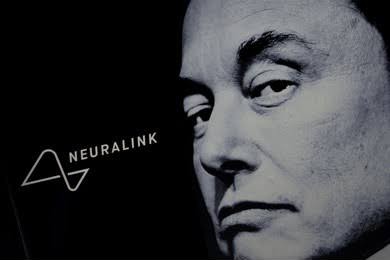Neuralink, Elon Musk’s brain chip company, has made great strides in 2024 which saw the company move from the theoretical stage to practical application when it announced its first successful medical implants in patients. This for sure is a success on its own and not just something that can be passed off easily, however, if musk as usual is in his own hypeman role, the expectations of what comes next might turn some of us ‘unaugmented’ individuals to scoff.
In addition to announcing that Neuralink will be fully operational, the promise-happy billionaire predicted that within two years, patients would surpass professional gamers in gaming performance: And that’s not even his most outrageous assertion. According to Musk, Neuralink will need to accelerate human brains in order to prevent AI from becoming “bored.”
Musk claims that a barrier to constructive human-AI convergence is that our “low data rate” is too sluggish. According to Musk, “our slow output rate would diminish the link between humans and computers,” using the useful analogy of plants: “Let’s say you look at this plant or whatever, and hey, I’d really like to make that plant happy, but it’s not saying a lot.”
To be clear, no Silicon Valley company can even come close to outperforming the human brain as a computer. Our youngster, however, believes that Neuralink can boost our brain’s output rate—the speed at which our brain sends impulses to the chip—by “three, maybe six, maybe more orders of magnitude.”
Some of these claims sound really outrageous. In August 2024, Elon Musk said, “Let’s say you could upload your memories, so you wouldn’t lose memories, which would radically alter what it means to be human: We would be something different. A futuristic cyborg of some. It’s not that far, it will be ten to fifteen years”.
However, Musk’s earlier estimate that hundreds of millions of people would have Neuralinks within “the next couple of decades” makes even that prediction about the medical application of Neuralink chips seem downright modest.
This is what some would refer to as a visionary, which is why Musk is so highly regarded by some.
I am not claiming to be an expert on this, just to be clear. It is evident, however, that if Musk’s more outrageous claims are even somewhat accurate, it would signal a social-technological revolution unlike anything we have ever witnessed and instantly establish a two-tiered species in which a tiny minority of people think six times faster than the majority. That doesn’t sound like a utopian idea, and it at least calls for the kind of moral and legal examination Musk shuns.
he problem is that, naturally, it doesn’t seem plausible that this will happen within Musk’s timeline. It is important to keep in mind that in addition to the man’s many notable accomplishments, there are a lot of unmet promises, many of which are far less generous than brain chips for hundreds of millions of people. Do you recall the system of one-car tubes?
Since 2014, Musk has stated that Tesla will have autonomous vehicles “next year”: Next year is not yet here. He predicted in 2019 that by 2020, there would be one million Tesla robo-taxis operating: They are still absent in 2024. Musk said there was nothing to be concerned about and that there will be no new cases in the US after the WHO proclaimed COVID-19 to be a pandemic: They would kill tens of thousands.
Then, maybe my favorite assertion of all, Musk asserts that by 2050, there will be a million people on the red planet, not only that humanity will reach Mars.
Musk’s other outrageous promises about the Neuralink technology include that it can somehow “cure” conditions like autism and schizophrenia, which are not illnesses, and give you extremely sharp “eagle eyes.”
In this regard, it is difficult to distinguish between the hype-man and the visionary, which Musk certainly is in certain respects. Unquestionably, Neuralink is not the only company making breakthroughs in brain-computer connections that were unthinkable just ten years ago: It is amazing that nobody can truly predict what the world will look like in 2030, let alone 2050.
Neuralink has successfully implanted devices in human patients, enabling them to interact with computers in ways that were previously unthinkable. This is something that can and should be acknowledged. Noland Arbaugh, Neuralink’s first patient was able to communicate with friends, play video games, and operate a computer without the need for physical input.
This is the tech story that has the greatest potential to either change the world or go down a lot of unexplored paths. Because, as much as it is about silicon, it is also a story about the human race, our potential, our evolution, and what might come next. Will the empathy and social aspects of people be enhanced if there are a million Neuralink-enabled people in the world?
One component of what may be the most significant change in human society since the Industrial Revolution is Neuralink. “We’re not just aiming to give people the communication data rate equivalent to normal humans,” Musk states.
“Our goal is to provide those who [are] quadriplegic, or who may have lost all brain-body connectivity, with a communication data rate that surpasses that of average people. Let’s grant superpowers to people,” he added.
Elon Musk has a lot on his plate. In addition to Neuralink, there are the AI wars—he is currently involved in a high-profile legal dispute with OpenAI. He is also involved in SpaceX, Starlink, the Tesla cabs and bots, and, of course, his infatuation with trolling on X.
The Neuralink technology has the power to genuinely change the way things are. It remains to be seen if it does: However, I’m noting that I should check in five years to see if a million of us are actually rocking brain chips.

